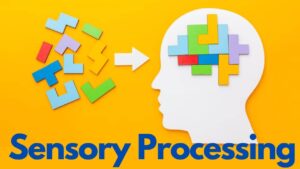Autism spectrum disorder (ASD) is a complex neurodevelopmental condition that can often co-occur with various other medical and psychiatric conditions. These co-occurring conditions are referred to as “comorbidities” or “co-morbid conditions.” It’s important to recognize and address these conditions alongside autism to provide comprehensive care and support to individuals with ASD. Some common co-occurring conditions for autism include:
Understanding Co-Occurring Conditions
Co-occurring conditions refer to medical or psychological disorders that exist alongside autism. These conditions can vary widely in their nature and severity, adding layers of complexity to an individual’s profile.
1. Intellectual Disability (ID): Intellectual disability, also known as cognitive impairment, is a condition characterized by limitations in intellectual functioning and adaptive behavior. It often co-occurs with autism, but not all individuals with autism have intellectual disability, as autism can vary widely in its severity and presentation.
2. Attention-Deficit/Hyperactivity Disorder (ADHD): ADHD is a neurodevelopmental disorder characterized by symptoms of inattention, hyperactivity, and impulsivity. It frequently coexists with autism, and both conditions can interact and influence each other.
3. Anxiety Disorders: Anxiety disorders, such as generalized anxiety disorder, social anxiety disorder, and separation anxiety disorder, are common in individuals with autism. The social challenges and sensory sensitivities associated with autism can contribute to the development of anxiety.
4. Depression: Depression is a mood disorder that can affect individuals with autism, particularly in adolescence and adulthood. The challenges of navigating social situations and the experience of being misunderstood or stigmatized can contribute to depression.
5. Epilepsy and Seizure Disorders: Epilepsy, a neurological disorder characterized by recurrent seizures, is more prevalent in individuals with autism compared to the general population.
6. Sensory Processing Disorders (SPD): Sensory processing difficulties are common in autism. SPD involves challenges in processing and integrating sensory information from the environment, which can lead to over- or under-responsiveness to sensory stimuli.
7. Gastrointestinal (GI) Disorders: GI issues, such as gastroesophageal reflux disease (GERD), irritable bowel syndrome (IBS), and constipation, are reported more frequently in individuals with autism.
8. Sleep Disorders: Sleep disturbances, including difficulties falling asleep, staying asleep, or experiencing restful sleep, are prevalent among individuals with autism.
9. Language and Communication Disorders: Some individuals with autism may have language and communication challenges, including speech delays, expressive language difficulties, and pragmatic language deficits.
10. Motor Coordination Difficulties: A significant number of individuals with autism may experience motor coordination difficulties, which can affect activities requiring precise movements, such as writing or tying shoelaces.
11. Tourette Syndrome: Tourette syndrome is a neurological condition characterized by repetitive, involuntary movements and vocalizations (tics), which can sometimes co-occur with autism.
Understanding the Interplay
The interplay between autism and co-occurring conditions is complex. Some co-occurring conditions might share underlying genetic or neurological factors with autism, contributing to their co-occurrence. Additionally, the challenges posed by one condition can exacerbate the effects of another.
Impact on Daily Life
Co-occurring conditions can significantly impact an individual’s daily life, affecting their communication, behavior, social interactions, and overall quality of life. For example, an individual with both autism and anxiety may find social situations even more challenging due to heightened anxiety levels.
Navigating Diagnosis and Treatment
Accurate Diagnosis: Proper assessment is crucial for identifying co-occurring conditions. It requires a comprehensive evaluation by healthcare professionals with expertise in both autism and the specific co-occurring condition.
Tailored Interventions: Interventions must be tailored to address the unique needs of each individual. This might involve a combination of behavioral therapies, medication, and support services.
Collaborative Approach: Collaboration among healthcare professionals, educators, therapists, and parents is essential to create a cohesive plan that addresses all aspects of an individual’s well-being.
Supporting Individuals with Co-Occurring Conditions
Holistic Approach: Adopt a holistic approach that considers the individual’s strengths, challenges, and co-occurring conditions. Recognize that interventions should be comprehensive and multidimensional.
Individualized Education Plans (IEPs): Work with educators to develop IEPs that address the specific needs arising from both autism and co-occurring conditions.
Family Support: Providing emotional support, access to resources, and networks for families can alleviate the challenges associated with co-occurring conditions.
Conclusion
Understanding and addressing co-occurring conditions is pivotal in providing comprehensive support for individuals with autism. The complex interplay between autism and co-occurring conditions necessitates a multifaceted approach that takes into account the uniqueness of each individual’s profile. By recognizing the challenges, seeking accurate diagnosis, and implementing tailored interventions, we can create a more inclusive environment that supports individuals in navigating the intricacies of autism and its co-occurring conditions.
Frequently asked questions (faqs) co-occurring conditions in autism.
A1: Co-occurring conditions, also known as comorbidities, are additional medical or psychological disorders that can exist alongside autism. These conditions may impact an individual’s health, behavior, and overall well-being.
A2: Co-occurring conditions are relatively common in individuals with autism. Studies have shown that a significant portion of autistic individuals experience co-occurring conditions, such as intellectual disabilities, anxiety disorders, ADHD, and epilepsy.
A3: The reasons for co-occurring conditions in autism can be complex. Shared genetic factors, neurological pathways, and developmental processes may contribute to the overlap between autism and certain co-occurring conditions.
A4: Co-occurring conditions can impact various aspects of an individual’s life. They can influence communication, social interactions, behavior, and overall functioning. The challenges posed by co-occurring conditions can interact with the characteristics of autism, making it important to address both aspects.
A5: Yes, co-occurring conditions can be diagnosed separately from autism. Diagnostic assessments conducted by healthcare professionals with expertise in the specific condition are essential to accurately identify and address co-occurring conditions.
A6: An individualized and comprehensive approach is recommended. This involves collaborating with healthcare professionals, educators, and therapists to develop tailored interventions that consider both the characteristics of autism and the specific co-occurring condition.
A7: Educators can support students with co-occurring conditions by creating inclusive classroom environments, developing Individualized Education Plans (IEPs) that address specific needs, and providing accommodations to help students succeed academically and socially.
A8: Yes, there are various treatments and interventions available for co-occurring conditions. Behavioral therapies, medication, speech therapy, occupational therapy, and specialized educational programs are some of the options that can be considered based on the individual’s needs.
A9: Yes, co-occurring conditions can change over time. Early intervention, proper diagnosis, and effective interventions can lead to improvements in some co-occurring conditions. However, the presence of co-occurring conditions may also fluctuate based on an individual’s developmental stage.
A10: Yes, it is possible for an individual with autism to have multiple co-occurring conditions simultaneously. The combination of conditions can impact an individual’s experiences, challenges, and strengths in unique ways.





